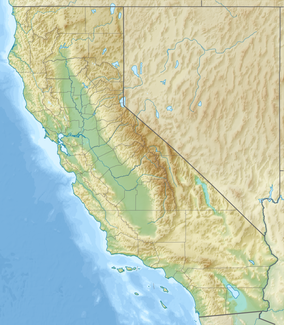Carmel River State Beach
| Carmel River State Beach | |
|---|---|

Carmel River State Beach
|
|
| Location | Monterey County, California, USA |
| Nearest city | Carmel, California |
| Coordinates | 36°31′56″N 121°55′37″W / 36.53222°N 121.92694°WCoordinates: 36°31′56″N 121°55′37″W / 36.53222°N 121.92694°W |
| Area | 297 acres (120 ha) |
| Established | 1953 |
| Governing body | California Department of Parks and Recreation |
Carmel River State Beach is a state park unit of Carmel, California, USA, featuring a 1-mile-long (1.6 km) protected beach with a lagoon formed by the Carmel River. The lagoon attracts a large number of migratory birds. The state beach includes Monastery Beach, (also called San Jose Creek Beach) which is popular with scuba divers. Sea kayakers also frequent the beach, which has easy access to the natural reserves of Point Lobos. The 297-acre (120 ha) park was established in 1953.
In 1602 Spanish explorer Sebastián Vizcaíno landed at this beach.Gaspar de Portolà, during the Portola expedition, was encamped on this beach and rested here before deciding to return to San Diego because of low supplies and having failed to rendezvous with the Spanish supply ships. A cross commemorating that marker can be found at the beach today.
Carmel River State Beach is a popular spot for divers and kayakers, who can access the notable kelp forests in the area. It is also popular with birders, and is a stop on the Central Coast Birding Trail. The best seasons for birdwatching at Carmel River State Beach are fall and winter.
Swimming on this section of the coast can be extremely dangerous because of the strong currents. Carmel River State Beach is considered especially dangerous for swimming, as the steep drop-off from shore can minimize turbulent waves, giving the mistaken impression of a calm sea.
The park is located adjacent to California State Route 1, about one mile south of Rio Road in Carmel, north of the Big Sur coast in Monterey County, California.
...
Wikipedia


